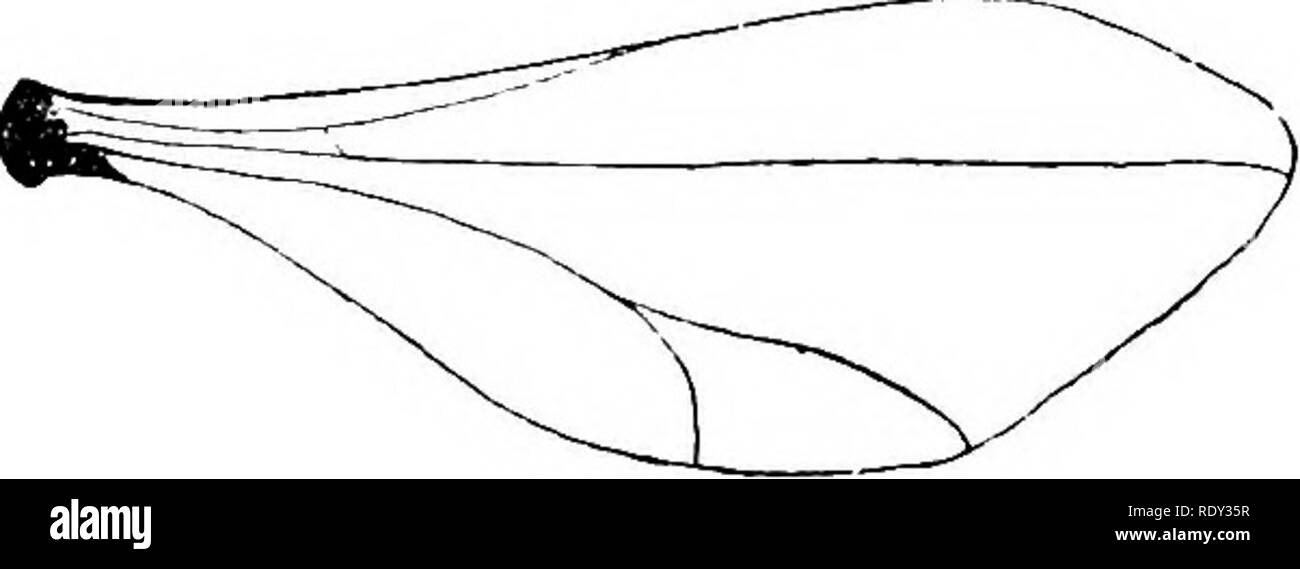. A text-book of agricultural zoology. Zoology, Agricultural; Zoology, Economic. DIPTERA OR TRUE FLIES. 199 second node from the ground. Here these Httle white larvae feed upon the sap of the plant, and turn to the curious " flax- seed " stage, in which the larva remains in its brown skin, which has hardened to form the puparium, and which resembles a flax- seed in appearance. The larvse are at times pale green, at others tinted with red. In these flax-seeds the larva turns to a minute pale-brown pupa. These flax-seeds may remain as such all the winter, or Fig. 95 —Wi>jg of Ceuido

Image details
Contributor:
The Book Worm / Alamy Stock PhotoImage ID:
RDY35RFile size:
7.1 MB (114.4 KB Compressed download)Releases:
Model - no | Property - noDo I need a release?Dimensions:
2603 x 960 px | 22 x 8.1 cm | 8.7 x 3.2 inches | 300dpiMore information:
This image is a public domain image, which means either that copyright has expired in the image or the copyright holder has waived their copyright. Alamy charges you a fee for access to the high resolution copy of the image.
This image could have imperfections as it’s either historical or reportage.
. A text-book of agricultural zoology. Zoology, Agricultural; Zoology, Economic. DIPTERA OR TRUE FLIES. 199 second node from the ground. Here these Httle white larvae feed upon the sap of the plant, and turn to the curious " flax- seed " stage, in which the larva remains in its brown skin, which has hardened to form the puparium, and which resembles a flax- seed in appearance. The larvse are at times pale green, at others tinted with red. In these flax-seeds the larva turns to a minute pale-brown pupa. These flax-seeds may remain as such all the winter, or Fig. 95 —Wi>jg of Ceuidomvia. they may give rise to a second brood of flies. This second brood hatches out in Sep- tember, long before our wheat is up, and thus have to lay their eggs on other plants, such as couch grass and timothy grass, pupating there in the spring, and then give rise to the May brood. The presence of this pest in a field is very marked. The straw, as soon as the ear begins to develop, bends over above the second node, and looks as if weather-beaten, the grain being small, if not spoilt. In America the second brood lays its eggs on the young winter wheat, the larvte living in the crown of the plant just beneath the ground, and causing the leaves to present an unhealthy dark and broad appearance, the central leaf usually disappearing. It is this method of attack that is the most severe, whole strips of wheat being entirely killed by it; but for obvious reasons we cannot suffer from this form of attack on our side of the Atlantic. The Hessian fly is most prevalent in the eastern counties of England, but may be found aU over the south, west, and in Yorkshire, &c. A second brood is the exception here, the insect passing the winter in the flax- seed stage, which remains very often, if the corn is not cut close, in the " gratten." Numbers may also be seen in the cav- ings and screenings from the threshing-machine. Wheat, barley, and rye, as well as the wild grasses mentio